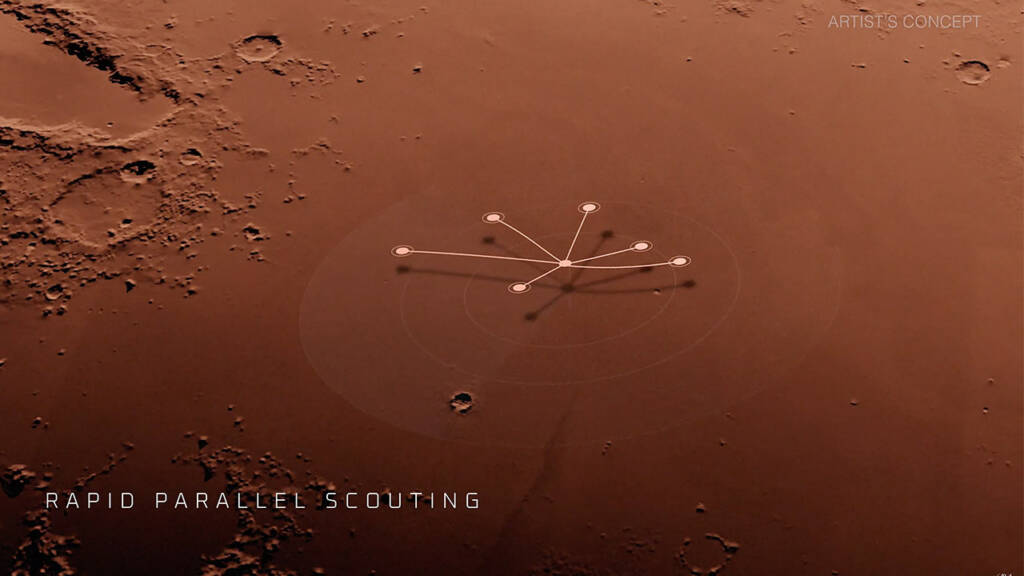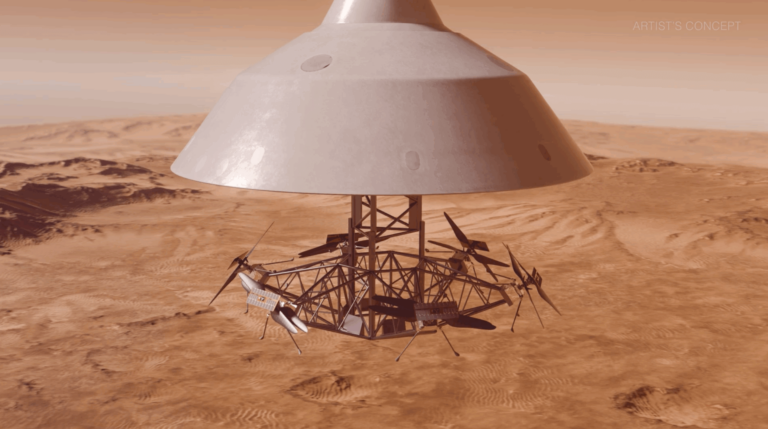NASA’s Jet Propulsion Laboratory and Virginia-based AeroVironment (AV) have announced an ambitious new Mars mission concept named Skyfall, which will send a fleet of six advanced Mars helicopters to the Red Planet. Slated for a potential launch in 2028, the mission aims to radically transform the way scientists study Mars and pave the way for human exploration.
How will NASA get to Mars? introducing the Skyfall maneuver
Unlike previous missions that relied on large rovers and complex landing platforms, Skyfall introduces a bold new entry strategy. Dubbed the Skyfall Maneuver, this innovative approach will see all six helicopters released mid-descent from a single entry capsule as it travels through the Martian atmosphere. Each rotorcraft—roughly the size of the trailblazing Ingenuity—will then land independently and begin autonomous operations on the Martian surface.
Each of the six Skyfall helicopters is designed to function as an independent scout, capable of flying over and mapping diverse terrain. Equipped with high-resolution cameras and sub-surface radar, the rotorcraft will search for vital resources like water ice—essential for future human landings—and send back critical environmental data to Earth.
This method not only reduces cost and complexity but also eliminates the need for a traditional lander. “It’s faster, cheaper, and more scalable,” said AV’s Head of Space Ventures, William Pomerantz, in a recent statement. “Skyfall isn’t just about the tech—it’s about making Mars more accessible.”
When will the Mars mission happen?
The Skyfall mission is targeting the 2028 Mars launch window, a favorable planetary alignment that occurs roughly every 26 months. Between now and then, AV and NASA JPL will focus on engineering the deployment mechanism, perfecting atmospheric entry dynamics, and finalizing communications systems that will enable the helicopters to relay data to orbiting satellites—without a rover or lander as a relay.
NASA has not yet officially confirmed Skyfall as a selected mission, but internal work and coordination have already begun to meet the timeline.


Images and video courtesy of AEROVIRONMENT

